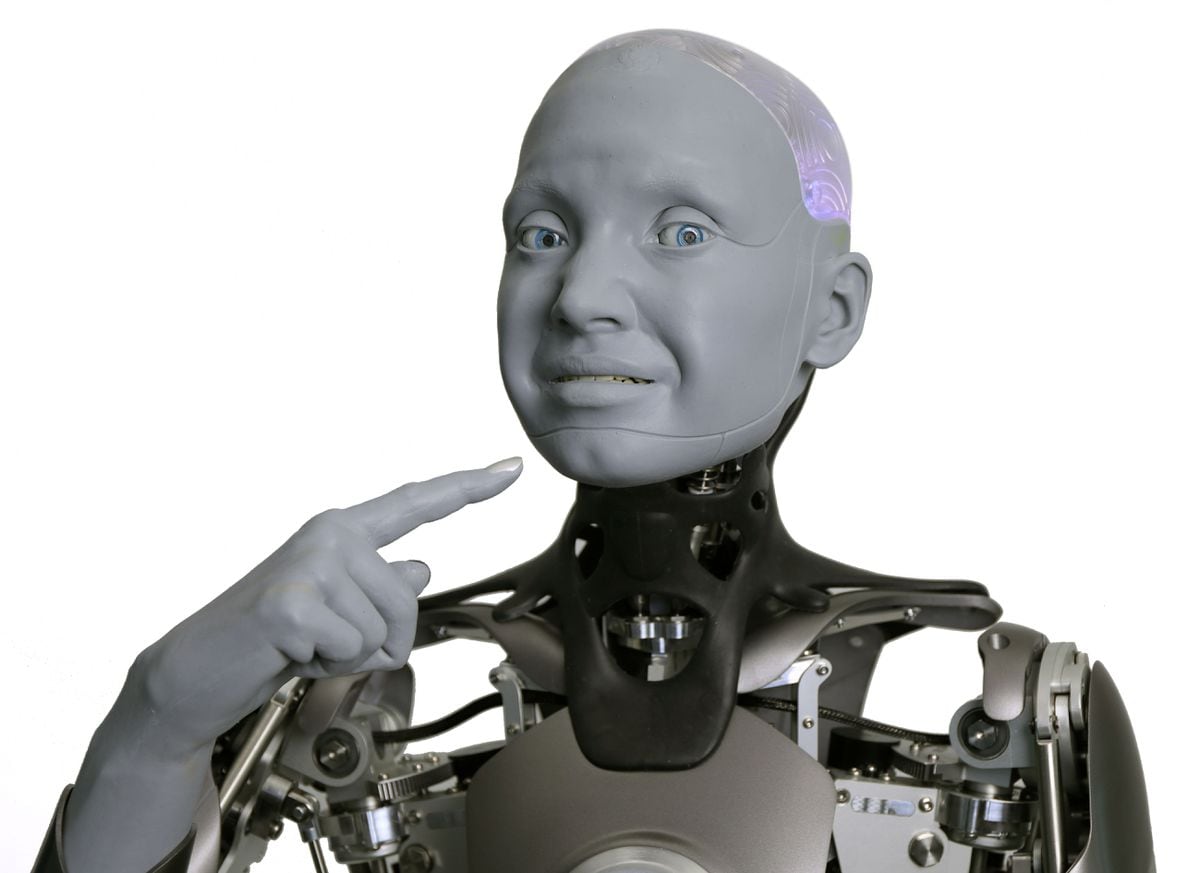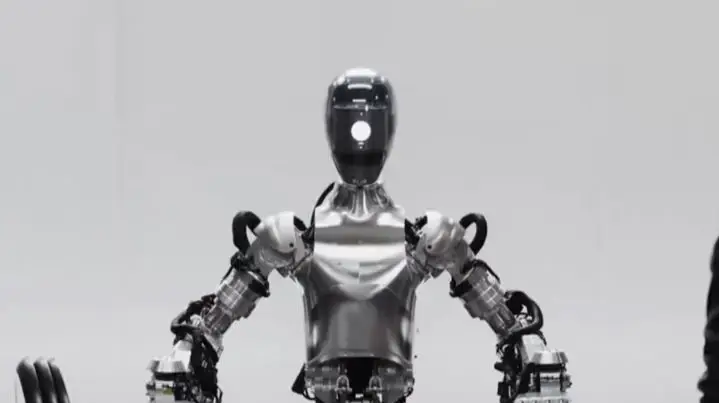The cinema has told this story on multiple occasions.
The most famous, the chronicle of the initiatory journey of HAL 9000, the true protagonist of
2001: A Space Odyssey
(1968), an artificial intelligence in which a sense of humor, a talent for chess and homicidal impulses coexisted naturally.
Among the most recent,
Ex Machina
(2014) with Alicia Vikander in the role of Ava, a humanoid robot as expeditious as it is seductive.
Both films consider to what extent intelligent machines can end up developing emotions and instincts.
And both agree that if they are going to end up reproducing something, it is our survival instinct.
They will exterminate us if they think we are going to destroy them.
Like the replicants in
Blade Runner
(1982).
Especially, as the most human of the androids that fiction has given us, that Roy Batty played by Rutger Hauer who said goodbye to existence with a monologue (yes, the one with tears in the rain) that came to be an ode vitalist worthy of Friedrich Nietzsche.
A metal homicide capable of profound poetic raptures.
Alicia Vikander plays a humanoid robot in the movie 'Ex Machina'.
In Falmouth, a quiet seaport in the extreme southwest of Great Britain, hyper-realistic androids capable of expressing emotions such as curiosity, fear, restlessness, joy or anguish are being manufactured.
They are the work of Engineered Arts Limited, a company of robotics artisans that prides itself on being "the world leader in the creation of entertaining humanoids."
The entertainment has to do with their ability to interact, engaging in coherent conversations in which they react to our comments and maintain eye contact at all times.
Humanoid refers to how closely they resemble us, how close we come to replicating the appearance of a human creature with a level of precision worthy of Roy Batty, Ava or Robocop.
One of the models in the 'Mesmer' series, in whose design 3D scans from real people have been incorporated to convincingly emulate the bone structure of humans.
The first of a new breed
But not all members of the Engineered Arts family of robots are hyper-realistic models.
Quinn, for example, is a sophisticated toy-looking personal assistant whose specialty is conversing in noisy environments.
Quinn listens like no one else and behaves professionally, intelligently and sympathetically, which is why he becomes the perfect receptionist, but not even the most myopic and short-sighted of the interlocutors would mistake him for a human being.
The same can be said for RoboThespian, a kind of actor-for-hire who can be programmed to take on different personalities.
Multilingual, hyperactive and easy to configure, he often hosts exhibitions, sporting events, cultural activities or company events.
Much less cartoonish are the models of the
Mesmer
series , in whose design three-dimensional scans from real people have already been incorporated, which allows emulating the human bone structure or the texture of the skin.
But the great evolutionary leap is undoubtedly Ameca, presented in December 2021 with a video that caused a sensation.
In it, this gray-faced creature with haunting blue eyes was blinking, flashing a shy smile, and even shying away, with a comical pout, from a human finger trying to stroke its nose.
RoboThespian can be programmed to take on different personalities.
Multilingual, hyperactive and easy to configure, he often hosts exhibitions, sporting events, cultural activities or company events.
Ameca is the first robot to make one of Engineered Arts' most eloquent statements of intent a reality: "Multiply the power of artificial intelligence by providing it with a convincing artificial body."
Ameca, as its creators point out, is a prototype in development that combines the company's powerful operating model (Tritium) with Mesmer technology.
It is modular, upgradable and capable of continuing to evolve, so that Ameca 2 will be an even more expressive conversationalist.
In the words of Will Jackson, CEO of the company, "its modular design means that you can run both the entire android and any of its parts separately."
With "head in the cloud" and feet on the ground, Ameca "takes advantage of any progress that the technology community is in a position to offer",
from the most complex data processing algorithms to the internet of things.
This robot moves with rare smoothness and precision, and its range of facial expressions continues to grow and refine.
Presentation of one of the models of the 'Mesmer' series.
The bohemian sculptress and the robot boy who 'feels' the pain
Other hyper-realistic robots are Affetto, the child android equipped with artificial skin that the Japanese University of Osaka has been working on for a year and a half and whose sensors allow him to experience “something similar to pain”.
Or Ai-Da, the gynoid artist who last November exhibited her “work of her” (a rustic clay sculpture created by artificial intelligence) at the foot of the Giza pyramids.
Seen from afar, in her striking bohemian attire consisting of an orange tunic and green sarong, Ai-Da might as well have looked like an up-and-coming artist on
promotional
tour .
But her appearance and her gestures are not as human as Ameca's.
Speaking to
The Verge
magazine , Will Jackson acknowledges that since the first images of Ameca appeared, his company has not stopped receiving emails accusing them of usurping the role of God and "helping to create the machines that one day will destroy the human gender".
There are also those who ask them if Ameca and his brothers "are programmed to have sexual relations."
Sex androids endowed with some kind of artificial intelligence do exist, although they are, in general, much more rudimentary and less reactive than Ameca.
They come to be dolls like Harmony, manufactured by the erotic toy company LetsTalkSex (LTS), with very limited interaction capacity.
Last June, Chris Bradford, a technology expert at
The Sun newspaper
, reviewed in an article the still incipient cybererotic industry citing a project of the California Institute of Technology that has created an artificial skin that reacts to external stimuli.
Robots covered with this skin tissue could "sense" changes in temperature, exposure to corrosive or toxic agents, or different types of contact with the body of human beings.
From there to "manufacturing humanoids endowed with erogenous zones and even with the ability to emulate orgasms", Bradford speculates, "there is a short distance that someone will end up traveling sooner or later".
However, Jackson assures that they do not consider giving their models reactive genitalia.
In his opinion, “much more exciting” possibilities exist, and they are determined to explore them.
"Everyone dreams of seeing a humanoid robot in action," explains the manager, "and our goal is to make that fantasy a reality."
Sex can wait.
Will Jackson, CEO of Engineered Arts Limited, next to a RoboThespian model.
The benefits of an android for everything
Ameca talks, welcomes guests, can be in charge of serving diners in an automated restaurant or parade on a fashion catwalk.
In a matter of a few years, we are likely to see Ameca's even more hyper-realistic successors assisting surgeons in open-heart operations or behind the wheel of electric vehicles.
It is about “giving a human face to artificial intelligence”.
Wilson and his team must solve technical challenges such as making sure his android isn't as fussy as the chess-playing robot that broke a seven-year-old boy's finger on July 26 during the Moscow tournament.
According to Toby Walsh, artificial intelligence expert and author of the book
Machines Behaving Badly
(Machines that misbehave), "it was an accident attributable to a programming error: the robot was not in a position to anticipate that the child would respond to its movement by placing its hand in its field of action and producing a mechanical reaction" .
Walsh recalls a famous case, that of Robert Williams, a Michigan auto factory worker, who was crushed in 1979 by a one-ton robotic arm, thus becoming the first human being killed by a robot.
The Williams thing was another accident.
But progress in fine-tuning automation (and in how cautiously we've grown accustomed to applying disruptive technologies) is measured by the distance between an accidental crush and a broken finger.
For his part, Williams is clear, for now, we should not worry about the machines losing badly.
"We can program them to mimic our emotions, but not to actually experience them."
And losing the sea (like orgasms or the annoyance of having your nose touched) is a human emotion that we only share with fictional robots like Roy Batty, not with those real rivals who will soon be part of our lives.



/cloudfront-eu-central-1.images.arcpublishing.com/prisa/LFO6NYKDYNGQJMNQRNDG6YRK7Q.jpg)





